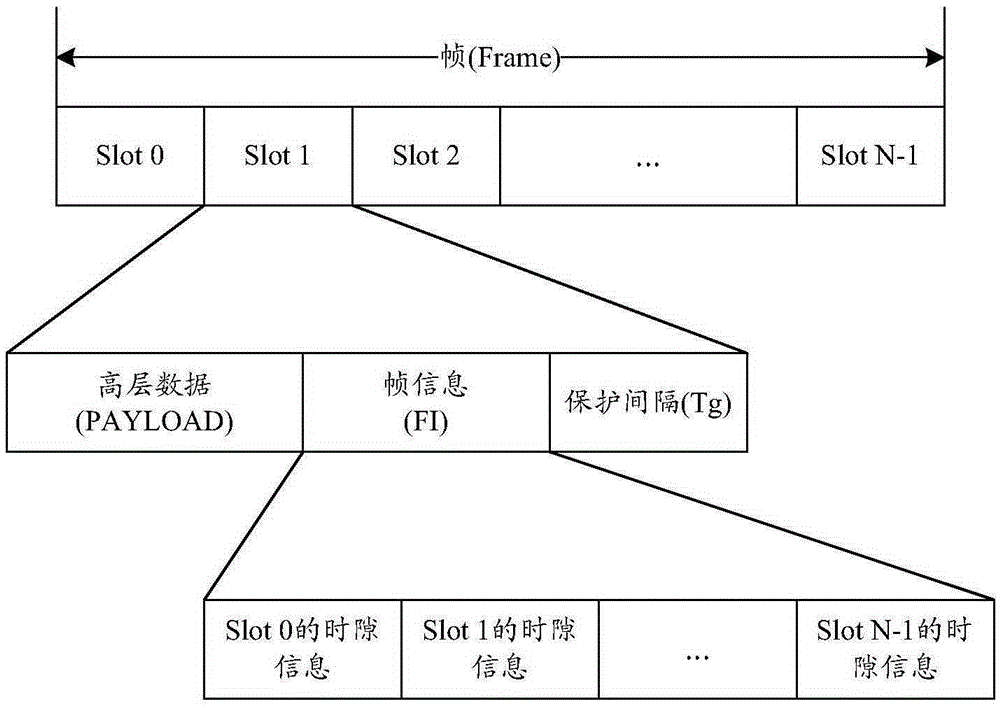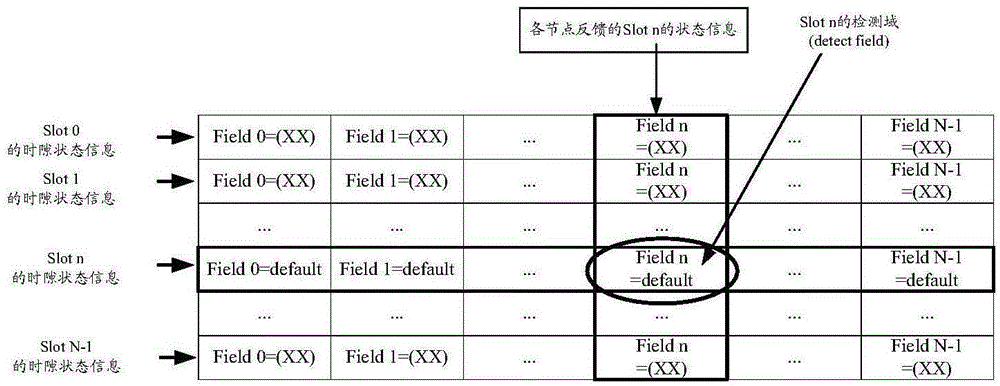Frame information transmission method and device
A transmission method and frame information technology, applied in the field of communication, can solve the problems of large FI overhead, increased FI overhead, low spectral efficiency, etc.
- Summary
- Abstract
- Description
- Claims
- Application Information
AI Technical Summary
Problems solved by technology
Method used
Image
Examples
Embodiment 1
[0086] Example 1: Bottom Measurement: Determining Collisions
[0087] Interference is indicated for a slot by two types of low-level measurements, and a slot collision is determined for that slot. For example, there are three nodes, node A, node B, and node C respectively.
[0088] Suppose the distance between node B and node A is less than the distance between node B and node C:
[0089] Node A and Node C occupy the same resources, Node B detects Node A, but at the same time it can be determined that there is Type 2 interference (the interference power is determined according to the signal power and the total received power, and the interference power is higher than the determined threshold value) .
[0090] In this case, the Node B indicates that there is slightly stronger interference for this resource.
[0091] Suppose the distance between node B and node A is equal to the distance between node B and node C:
[0092] In this case, Node B may not solve any of them, and at...
Embodiment 2
[0096] Embodiment 2: The STI is removed, and the time slot occupancy information is transmitted. For example, there are four nodes, which are node A, node B, node C and node D respectively.
[0097] Wherein, it is assumed that node A and node B, node B and node C, node C and node D are one-hop neighbor nodes to each other. Nodes A, B, C, and D occupy time slots 1, 2, 3, and 4, respectively.
[0098] The FI message sent by node A does not indicate a specific STI.
[0099] Node B sends FI to indicate that time slot 1 is occupied by its one-hop neighbor node.
[0100] After receiving the information from node B, node C knows that time slot 1 is occupied by a two-hop node.
[0101] Node C indicates that slot 1 is occupied by a two-hop neighbor and slot 2 is occupied by a one-hop neighbor.
[0102] After receiving the information from node C, node D obtains the following information: slot 1 is occupied by a three-hop neighbor, slot 2 is occupied by a two-hop neighbor, and slot ...
Embodiment 3
[0105] Embodiment 3: The combination of bottom-level measurement and high-level to deal with the collision state. For example, there are five nodes, which are node A, node B, node C, node D and node E respectively.
[0106] Both node C and node A occupy time slot 1, and node D and node B occupy other time slot resources respectively. Assume that node B occupies time slot No. 2, and node D occupies time slot No. 3. Node E occupies time slot No. 4.
[0107] Both node B and node C are one-hop neighbor nodes of node D.
[0108] Node D and node E are one-hop neighbor nodes.
[0109] Time slot 1:
[0110] Node A and Node C send messages in slot 1 at the same time:
[0111] Node D correctly decodes the information sent by node C, that is, according to the underlying measurement, there is no type of interference (the specific determination is the same as that in Embodiment 1, and will not be described here), that is, it is not determined that a collision occurs.
[0112] Node B ...
PUM
 Login to View More
Login to View More Abstract
Description
Claims
Application Information
 Login to View More
Login to View More - R&D
- Intellectual Property
- Life Sciences
- Materials
- Tech Scout
- Unparalleled Data Quality
- Higher Quality Content
- 60% Fewer Hallucinations
Browse by: Latest US Patents, China's latest patents, Technical Efficacy Thesaurus, Application Domain, Technology Topic, Popular Technical Reports.
© 2025 PatSnap. All rights reserved.Legal|Privacy policy|Modern Slavery Act Transparency Statement|Sitemap|About US| Contact US: help@patsnap.com



